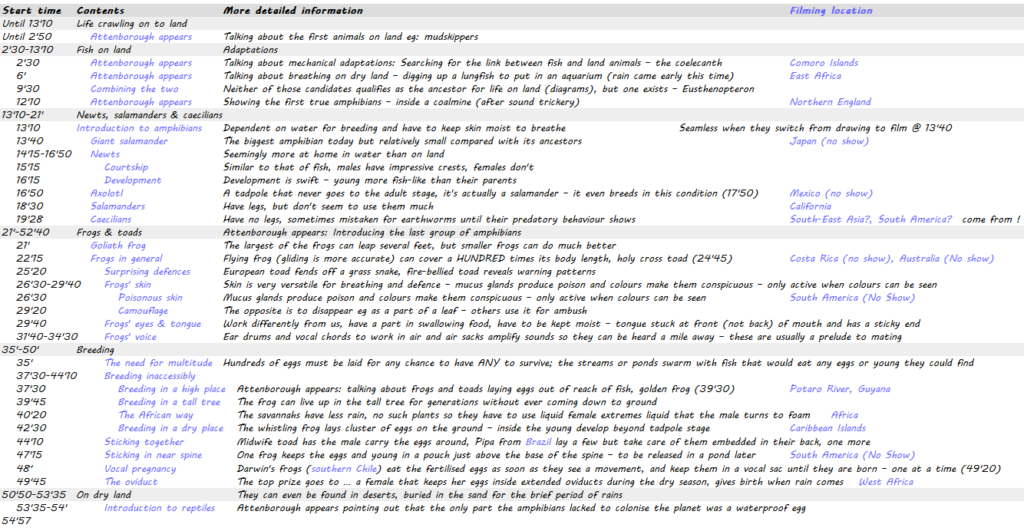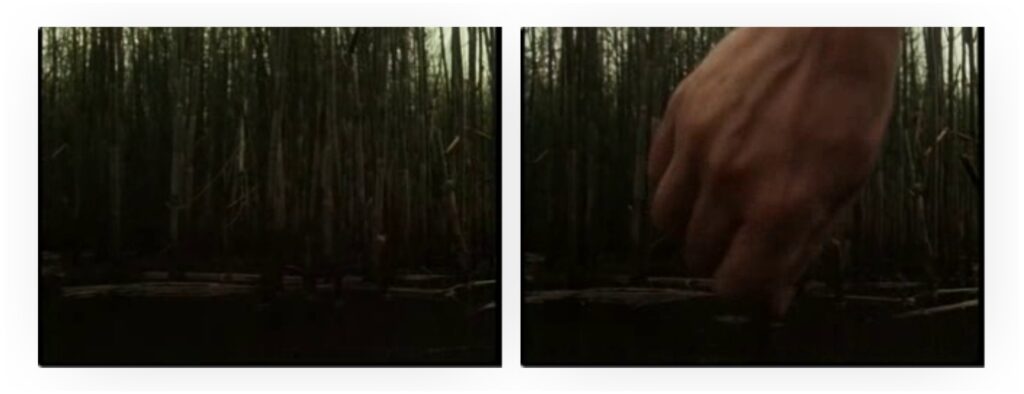Original air date: 20 February 1979
This episode is a continuation of the previous one, vertebrates set their feet on dry land. Like previous episode this one is marked by one dominant group, in this case frogs and toads. Along with newts and salamanders the are called amphibians.


Sequences of interest
Illusion of grandeur
There is one set of sequences of particular interest. Starting at 11’20 the viewer is tempted to think the cameraman is filming rather tall plants that is until Attenborough’s hand spoils the view and it turns out to be absolutely tiny.

Sound illusion
This is followed by another illusion, this time involving the sound recording: Attenborough talks as if he is standing somewhere in the middle of nowhere until he utters the word “coalmine”. Instantly the thumping noise of the drill is heard in the background.
A spectacular example of parental care is shown by Darwin’s frog in Southern Chile (48′-49’40)
The males eat the eggs as soon as they start moving. The eggs only go down to the vocal sacks where they develop and cause a ‘vocal pregnancy’ because the male cannot use the vocal chords during their development.

As soon as the young hatch (images above) the start singing (or calling) again.
Filming locations
In the Comoro Islands, talking about the coelacanth (3′)
East Africa, bringing a lungfish to life in the height of the dry season (6′-8’40)
North of England, picking up horse tail while explaining the vegetation long ago (11′-12′)
Having a look at tadpoles in pools by the Potaro river in Guyana, South America (37’30)
Western Australia, squeezing a frog for its water, before finding a pond for it to recover (50’40-53’30)